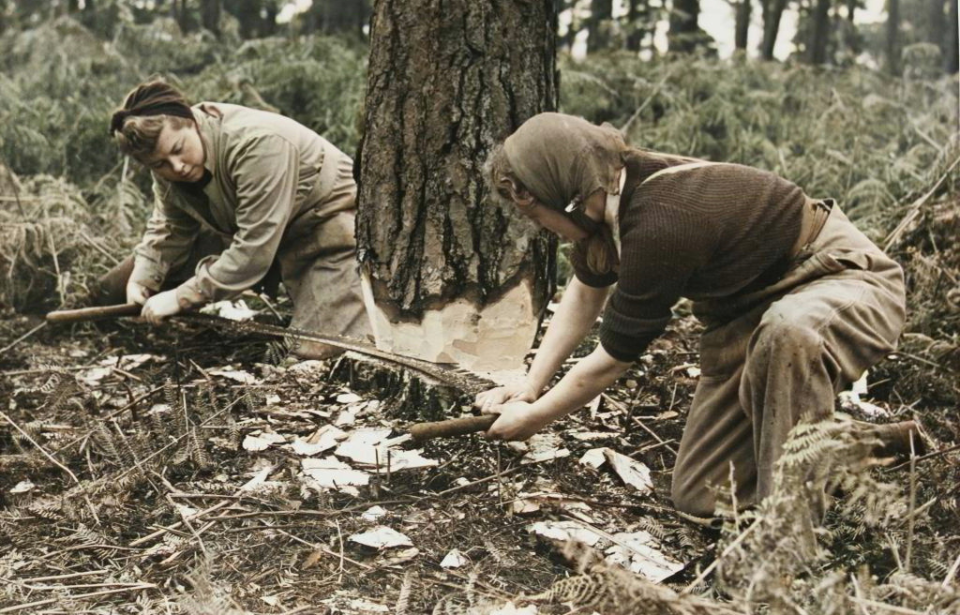Throughout the Second World War, women in Britain stepped up wherever they were needed. Many volunteered as air wardens or joined civilian organizations dedicated to providing aid to troops serving abroad. Some enlisted in the Royal Air Force (RAF), while others opted for the Women’s Land Army.
Most received immediate praise and recognition for their work, except one group: the Women’s Timber Corps (WTC).
A shortage of timber
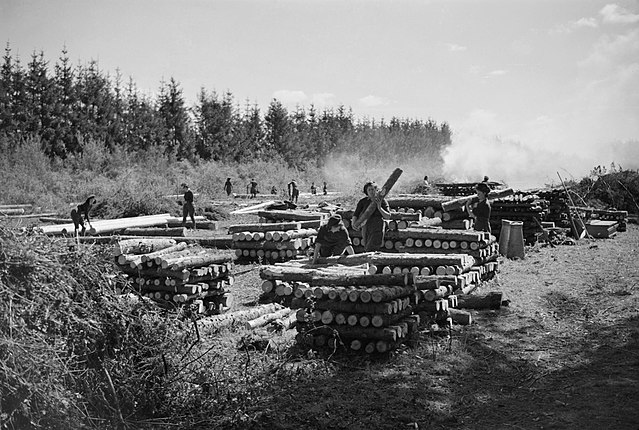
The origins of the Women’s Timber Corps dates back to World War I, when the Women’s Timber Service was formed. Not long after the conflict, the British government established the Forestry Commission and tasked it with increasing the nation’s timber production.
Unfortunately, the trees planted to replace those cut down were still immature. By the time World War II broke out, Britain was importing 96 percent of its timber requirements. There was also a labor shortage, as the men who regularly worked in the forests had joined the fight in Europe. To combat this, the Forestry Commission began recruiting women.
In 1942, the German occupation in Norway was causing a shortage of imported timber. In response, the Home Grown Timber Production Department created the Women’s Timber Corps. A month later, Scotland followed suit and formed its own Corps. While the work was grueling and arduous, these women were eventually seen as being just as good as the men they’d replaced.
Women’s Timber Corps (WTC)
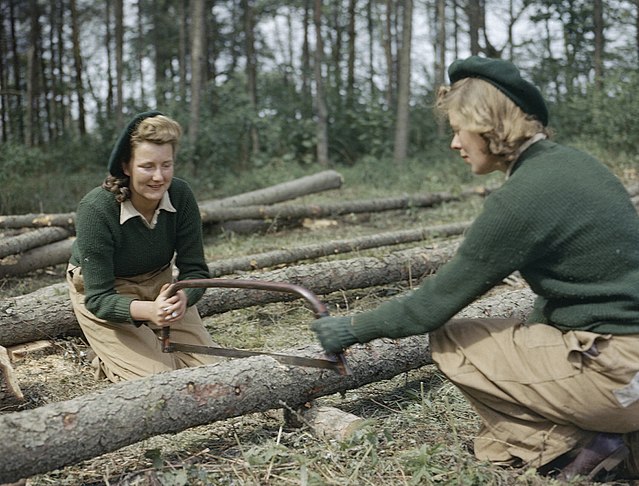
The Women’s Land Army (WLA) was charged with the administration of and recruitment for the Women’s Timber Corps, despite being an entirely separate branch. The WTC had a similar uniform to its counterpart, except that members, nicknamed “Lumber Jills,” wore berets and a different armband. Their badges also depicted a fir tree, instead of a sheaf of wheat.
The exact numbers are unknown, but it’s estimated between 6,000 and 13,000 women signed up for the WTC. While the official recruiting age was 17 and over, girls as young as 14 also enlisted. Many willingly traded city living for more rural settings, and the main requirement was that they have the enthusiasm and resilience needed for the job.
Training took approximately four-to-six weeks and occurred at WTC depots in Culford, Wetherby, Lydney and Hereford. Once complete, the women were stationed across the United Kingdom.
Grueling and dangerous work
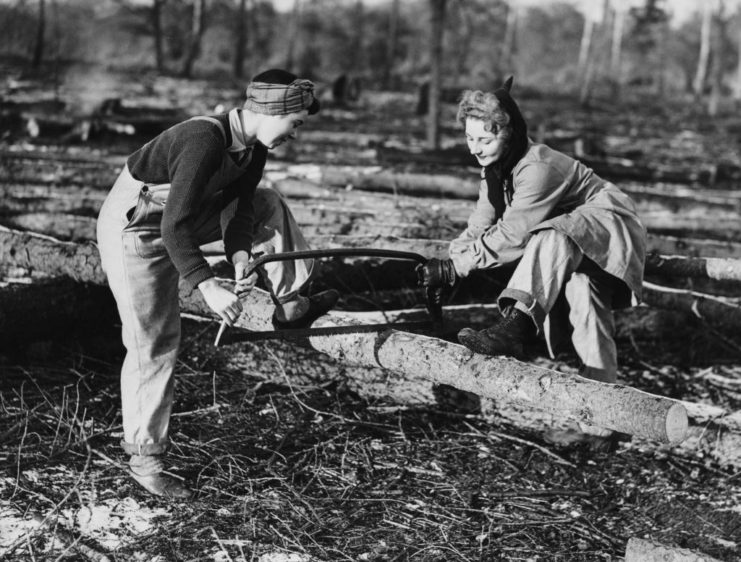
The Women’s Timber Corps work included many jobs, including crosscutting, felling, snedding and operating sawmills. They also learned how to drive tractors and trucks, and to work with horses. The most specialized skill was measuring. The three objectives for this task were: identifying trees for felling, assessing the timber in a tree and measuring the amount felled.
A large portion of what was produced was mining timber used to keep the country running. It was also used for pit props for the mines, crosses on soldiers’ graves, telegraph poles, gun mats, railway sleepers, roadblocks, ladders, newsprint, mobile tracking to support tanks and ships’ masts.
The women of the WTC worked from 7:00 AM-4:30 PM. This created resentment between them and the Women’s Land Army, who worked longer hours and considered the Timber Corps the “soft option.” They were subjected to meager living conditions and often had to find their own accommodations. This was difficult, as many held prejudices against them for doing a man’s job.
Another point of contention was the pay. Tree fellers earned between 35 and 46 shillings per week, while measurers earned more than 50. They were paid piece-work, instead of a set wage, meaning their average wage was a lot higher than that of the Women’s Land Army.
A long wait for recognition
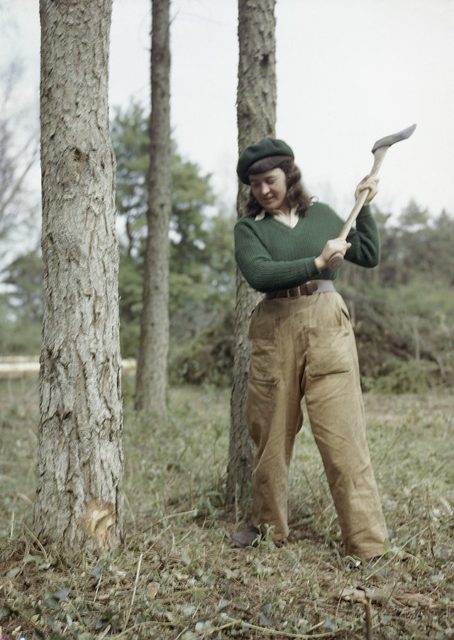
The Women’s Timber Corps was disbanded in 1946. While its members received a letter from Elizabeth, the Queen Mother, they were offered no other form of recognition, nor afforded the gratuity or retraining of women who’d served in the Armed Forces.
In 2007, the Department of Environment, Food and Rural Affairs announced that surviving members would be given a new badge to commemorate their service. That same year, a memorial statue dedicated to them was also unveiled in Queen Elizabeth Forest Park, in Aberfoyle, Stirling, Scotland.
More from us: Who Was Elizabeth ‘Lee’ Miller? The True Story Behind the Kate Winslet-Led Movie
Want to become a trivia master? Sign up for our War History Fact of the Day newsletter!
The Forestry Commission marked the 70th anniversary of the WTC in 2012, after which BBC’s Countryfile aired a tribute to the work they’d accomplished. The most recent tribute occurred in 2014, when a statue honoring them and the Women’s Land Army was unveiled at the National Memorial Arboretum, in Alrewas, Scotland.
